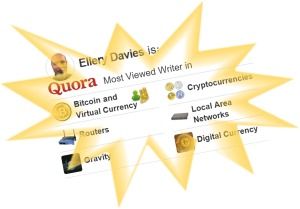As we continue growing as a technological society at an exponential rate, what will the fate of money be as a result? — Francesco Amati for Serious Wonder.
Category: economics – Page 232

Think Like a Workplace Futurist
It truly takes more than 10 year products and services roadmap to retain a company’s competitive edge these days especially with the current sophisticated and high demand consumers. Futurists truly are the NextGen Disrupters.
In the first quarter of 2015, Millennials finally overtook Generation X as the largest cohort in the workplace — there are more than 53.5 million of them working today. Their massive size and economic power has had marketers and business leaders tracking the “Millennial mindset” for years.
And yet, nipping at their heels, here comes Generation Z, the oldest of who are just starting to come of age. The U.S. Census estimates that Generation Z will include close to 80 million members — a number that eclipses the conversation-dominating Millennials.
It’s time to stop thinking in terms of generations; such thinking makes it too easy to buy into assumptions. For example, Millennials aren’t necessarily tech geniuses any more than anyone over the age of 40 is categorically a Luddite.

How Will Artificial Intelligence Change War?
Davos, US military branches, Time Magazine, etc. are all talking about the Robotic Battlefield.
Automated systems have already reshaped modern warfare, most notably with the widespread use of drones in conflict. Now, experts predict that advances in artificial intelligence could further change how we fight battles.
The new frontiers of warfare are not without ethical questions. Many have already challenged whether the United States should use unmanned drones to kill terrorists.
In this poll ahead of the World Economic Forum in Davos, TIME asks key questions about how readers think artificial intelligence will change warfare. TIME Executive Editor Michael Duffy will present the results in Davos, Switzerland on Jan. 21.

Half of plastic trash in oceans comes from 5 countries
If true, this might mean there’s a “low hanging fruit” solution to ocean gyre garbage — a targeted effort to improve garbage collection in a small number of cities in developing nations, might dramatically reduce it. Hint, hint, Bill & Melinda Gates Foundation! Side benefit would be greatly improving the lives of people in those cities, with some obvious health benefits along the way.
Economic growth in these countries is outpacing infrastructure, and their trash is collecting in the sea.
Why 3D Printing Will Be a Key Technology in the Next Space Race
NASA recently announced that they test fired a research rocket engine. Nothing special about that—other than the fact said engine was 75 percent 3D printed parts.
As industrial 3D printing has moved from prototyping to actually manufacturing finished products, the aerospace industry has become an avid early adopter. Although in many industries mass production techniques still make economic sense—for the ultra-precise, almost bespoke parts in rockets? 3D printing is a great fit.
Last year, GE showed off a scaled down 3D printed jet engine firing at 33,000 RPM. SpaceX’s recent recovery of a Falcon 9 rocket was not only spectacular, but the rocket has long used 3D printed parts too. And NASA’s latest trial shows 3D printing is set to become an even bigger part of rocket engine manufacturing.

Bitcoin Primer: Don’t Start with Miners
I administer the Bitcoin P2P discussion group at LinkedIn, a social media network for professionals. A frequent question posed by newcomers and even seasoned venture investors is: “How can I understand Bitcoin in its simplest terms?”
Engineers and coders offer answers that are anything but simple. Most focus on mining and the blockchain. In this primer, I will take an approach that is both familiar and accurate…
Terms/Concepts: • Miners • Blockchain • Double-Spend
First, forget about everything you have heard about ‘mining’ Bitcoin. That’s just a temporary mechanism to smooth out the initial distribution and make it fair, while also playing a critical role in validating the transactions between individuals. Starting with this mechanism is a bad way to understand Bitcoin, because its role in establishing value, influencing trust or stabilizing value is greatly overrated.
The other two terms are important to a basic understanding of Bitcoin and why it is different, but let’s put aside jargon and begin with the familiar. Here are three common analogies for Bitcoin. #1 is the most typical impression pushed by the media, but it is least accurate. Analogy #3 is surprisingly on target.
1. Bitcoin as Gold
You can think of Bitcoin as a natural asset, but with a firm, capped supply. Like gold, the asset is a limited commodity that a great many people covet. But unlike gold, the supply is completely understood and no one organization or country has the potential to suddenly discover a rich vein and extract it from the ground.
2. Bitcoin as a Debit or Gift Card
Bitcoin is also a little like a prepaid debit card, you can exchange cash for it and then use it to buy things—either locally (subject to growing recognition and acceptance) or across the Internet. But here, too, there is a difference. A debit card must be loaded with a prepaid balance. That is, it must be backed by something else, whereas Bitcoin has an intrinsic value based on pure market supply and demand. A debit card is a vehicle to transmit or pay money—but Bitcoin is the money itself.
3. Bitcoin as a Foreign Currency
Perhaps the most accurate analogy for Bitcoin (or at least where it is headed), is as a fungible, convertible, bankable foreign currency.
Like a foreign currency, Bitcoin can be…
- Easily exchanged with cash
- Easily transmitted for purchases, sales, loans or gifts
- Stored & saved in an online account or in your mattress (Advantage: It can also be stored in a smart phone or in the cloud—and it can backed up!)
- Has a value that floats with market conditions
- Is backed by something even more trustworthy than a national government
Unlike the cash in your pocket or bank account, Your Bitcoin wallet can be backed up with a mouse click. And, with proper attention to best practices, it will survive the failure of any exchange, bank or custodian. That is with proper key management and the use of multisig, no one need lose money when a Bitcoin exchange fails. The trauma of past failures was exacerbated by a lack of tools, practices and user understanding. These things are all improving with each month.
So, What’s the Big Deal?
So, Bitcoin is a lot like cash or a debit card. Why is this news? Bitcoin is a significant development, because the creator has devised a way to account for moving money between buyer and seller (or any two parties) that does not require any central bank, bookkeeper or authority to keep tabs. Instead, the bookkeeping is crowd sourced.
For example, let’s say that Alice wants to purchase a $4 item from Bob, an Internet merchant in another country.
a) Purchase and settlement with a credit card
With a credit card, wire transfer or check, Alice can pay $4 easily. But many things occur in the background and they represent an enormous transaction overhead. Alice must have an account at an internationally recognized bank. The bank must vouch for Alice’s balance or credit in real time and it must then substitute its own credit for hers. After the transaction, two separate banks at opposite ends of the world must not only adjust their client account balances, they must also settle their own affairs through an interbank-settlement process.
The two banks use different national currencies and are subject to different laws, oversight and reporting requirements. Over the course of the next few days, the ownership of gold, oil or reserve currencies is transferred between large institutions to complete the affairs of Alice’s $4 purchase.
b) Now, consider the same transaction with Bitcoin
Suppose that Alice has a Bitcoin wallet with a balance equal to $10. Let’s say that these characters represent $10 in value: 5E 7A 44 1B. (Bitcoin value is expressed as a much longer character string, but for this illustration we are keeping it short). Alice wants to buy a $4 item from Bob. Since she has only this one string representing $10, she must somehow get $6 in change.
With Bitcoin, there is no bank or broker at the center of a transaction. The transaction is effected directly between Alice and Bob. But there is a massive, distributed, global network of bookkeepers standing ready to help Alice and Bob to complete the transaction. They don’t even know the identities of Alice or Bob, but they are like a bank and independent auditor at the same time…
If Alice were to give Bob her secret string (worth $10), and if Bob gives her a string of characters worth $6 as change, one wonders what prevents Alice from double-spending her original $10 secret? But this can’t happen, because the miners and their distributed blockchain are the background fabric of the ecosystem. In the Bitcoin world, Alice is left with a brand new secret string that represents her new bank balance. It can be easily tested by anyone, anywhere. It is worth exactly $6.
This example is simplified and without underlying detail. But the facts, as stated, are accurate.
Conclusion
For Geeks, Bitcoin is the original implementation of a blockchain distributed ledger. Miners uncover a finite reserve of hidden coins while validating the transactions of strangers. As such, Bitcoin solves the double spend problem and enables person-to-person transactions without the possibility of seizure or choke points.
But for the rest of us, Bitcoin offers a very low cost transaction network that will quickly replace checks and debit cards and may eventually replace cash, central banks, and regional monetary authorities. The safeties, laws and refund mechanisms offered by banks and governments can still be applied to Bitcoin for selected transactions (whenever both parties agree to oversight), but the actual movement of value will be easier, less expensive and less susceptible to 3rd party meddling.
- Bitcoin is a distributed, decentralized and low cost payment network
- It is adapted to a digital economy in a connected world: fluid & low friction, trusted, secure
- More zealous proponents (like me) believe that is gradually becoming the value itself (i.e. it needn’t be backed by assets, a promise of redemption, or a national government. In this sense, it is like a very stable, foreign currency
Additional Reading:
- This Bitcoin article is 4 years old. But, as a brief cryptocurrency introduction, it aids the learning curve: Can cash have value if it isn’t real?
- This recent Bitcoin posts explains the legal climate and what governments can and cannot do to discourage adoption: Can governments ban Bitcoin?
Philip Raymond sits on Lifeboat’s New Money Systems Board and administers Bitcoin P2P, a LinkedIN community. He is co-chair of CRYPSA and host of The Bitcoin Event. He writes for Lifeboat, Quora, Sophos and Wild Duck.

German experiment will test whether the welfare state can be replaced by a basic guaranteed income
A new experiment to give away money as “basic income” is underway in Germany. In 2014, Michael Bohmeyer, a 31-year-old German entrepreneur, launched “My Basic Income” (“Mein Grundeinkommen”), and this month, the project, made possible through crowdfunding, issued $1,100 checks to 26 people to use however they want. Leftists in Germany tend to support the idea…
Advertising

RAND Summer Institute
Are you a current or aspiring researcher working in the #aging field? Then you may be interested in the 23rd annual RAND Summer Institute in Santa Monica. This July, institute participants will attend a series of master lectures that offer insights into the science of aging, and the relationships between the aging field and health, economic status, and public policy. Register by March 15.

Can Governments Ban Bitcoin?
Recently, I was named Most Viewed Writer on Bitcoin and cryptocurrency at Quora.com (writing under the pen name, “Ellery”). I don’t typically mirror posts at Lifeboat, but a question posed today is relevant to my role on the New Money Systems board at Lifeboat. Here, then, is my reply to: “How can governments ban Bitcoin?”
Governments can enact legislation that applies to any behavior or activity. That’s what governments do—at least the legislative arm of a government. Such edicts distinguish activities that are legal from those that are banned or regulated.
You asked: “How can governments ban Bitcoin?” But you didn’t really mean to ask in this way. After all, legislators ban whatever they wish by meeting in a congress or committee and promoting a bill into law. In the case of a monarchy or dictatorship, the leader simply issues an edict.
So perhaps, the real question is “Can a government ban on Bitcoin be effective?”
Some people will follow the law, no matter how nonsensical, irrelevant, or contrary to the human condition. These are good people who have respect for authority and a drive toward obedience. Others will follow laws, because they fear the cost of breaking the rules and getting caught. I suppose that these are good people too. But, overall, for a law to be effective, it must address a genuine public need (something that cries out for regulation), it must not contradict human nature, and it must address an activity that is reasonably open to observation, audit or measurement.
Banning Bitcoin fails all three test of a rational and enforceable law.
Most governments, including China and Italy, realize that a government ban on the possession of bits and bytes can be no more effective than banning feral cats from mating in the wild or legislating that basements shall remain dry by banning ground water from seeking its level.
So, the answer to the implied question is: A ban on Bitcoin could never be effective.
For this reason, astute governments avoid the folly of enacting legislation to ban Bitcoin. Instead, if they perceive a threat to domestic policy, tax compliance, monetary supply controls or special interests, they discourage trading by discrediting Bitcoin or raising concerns over safety, security, and criminal activity. In effect, a little education, misinformation or FUD (fear, uncertainty and doubt) can sometimes achieve what legislation cannot.
Reasons to Ban Bitcoin … a perceived threat to either:
- domestic policy
- tax compliance
- monetary supply controls
- special interests
Methods to Discourage Trading (rather than a ban)
- Discredit Bitcoin (It’s not real money)
- Raise concerns over safety & security
- Tie its use to criminal activity
Avoiding both a ban—and even official discouragement
There is good news on the horizon. In a few countries—including the USA—central bankers, monetary czars and individual legislators are beginning to view Bitcoin as an opportunity rather than a threat. Prescient legislators are coming to the conclusion that a distributed, decentralized trading platform, like Bitcoin, does not threaten domestic policy and tax compliance—even if citizens begin to treat it as cash rather than a payment instrument. While a cash-like transition might ultimately undermine the federal reserve monetary regime and some special interests, this is not necessarily a bad thing—not even for the affected “interests”.
If Bitcoin graduates from a debit/transmission vehicle (backed by cash) to the cash itself, citizens will develop more trust and respect for their governments. Why? Because their governments will no longer be able to water down citizen wealth by running the printing press, nor borrow against unborn generations. Instead, they will need to collect every dollar that they spend or convince bond holders that they can repay their debts. They will need to balance their checkbooks, spend more transparently and wear their books on their sleeves. All good things.
Naturally, this type of change frightens entrenched lawmakers. The idea of separating a government from its monetary policy seems—well—radical! But this only because we have not previously encountered a technology that placed government accountability and transparency on par with the private sector requirement to keep records and balance the books. [continue below image]…

What backs your currency? Is it immune from hyperinflation?
Seven sovereign countries use the US Dollar as their main currency. Why? Because the government of these countries were addicted to spending which leads to out-of-control inflation. They could not convince citizens that they could wean themselves of the urge to print bank notes with ever increasing zeros. And so, by switching to the world’s reserve currency, they demonstrate a willingness to settle debts with an instrument that cannot be inflated by edict, graft or sloppy bookkeeping.
But here’s the problem: Although the US dollar is more stable than the Zimbabwe dollar, this is a contest in relative trust and beating the clock. The US has a staggering debt that is sustained only by our creditors’ willingness to bear the float. Like Zimbabwe, Argentina, Greece and Germany between the wars, our lawmakers raise the debt ceiling with a lot of bluster, but nary a thought.
Is there a way to instill confidence in a way that is both trustworthy and durable? Yes! —And it is increasingly likely that Bitcoin is the way to the trust and confidence that is so sorely needed.
Philip Raymond sits on the New Money Systems board. He is also co-chair of Cryptocurrency Standards Association and editor at A Wild Duck.

Artificial intelligence, free money and the end of capitalism
What will really happen if artificial intelligence takes the jobs we have today? How would society change if we got a basic income?